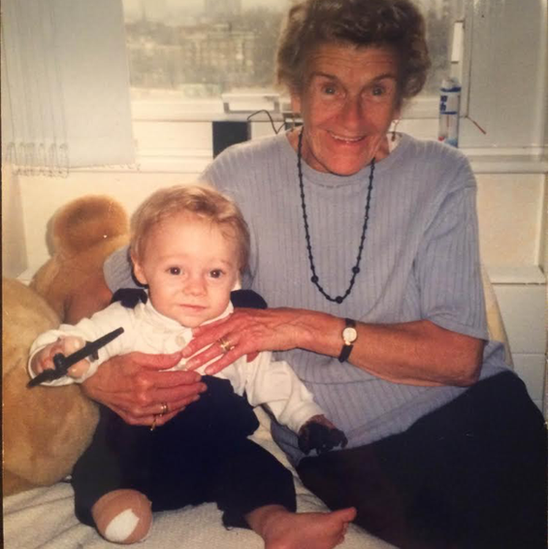The biggest killer you may not know
- Published
- comments

"I flat-lined seven times, it was very uncertain for a long time whether I would make it," says Patrick Kane.
He nearly died from a condition that kills more people in the UK each year than bowel, breast and prostate cancer combined.
Patrick was just nine months old when one morning he became poorly, floppy and "generally unresponsive".
The family GP said he just needed Calpol, but Patrick's mother was still concerned and took him to hospital.
But on the journey things got rapidly worse.
"It really was a sudden thing... upon arrival I had multiple organ failure," he says.
Patrick spent three and a half months in St Mary's hospital in London, lost his right leg below the knee, his left arm and fingers on his right hand.

The 19-year-old is now studying biochemistry at university in Edinburgh.
What he had was sepsis.
"Either you know someone who's had sepsis, or you've never heard of it," Patrick tells the BBC.

What is sepsis?
Sepsis is triggered by infections, but is actually a problem with our own immune system going into overdrive.
It starts with an infection that can come from anywhere - even a contaminated cut or insect bite.
Normally, your immune system kicks in to fight the infection and stop it spreading.
But if the infection manages to spread quickly round the body, then the immune system will launch a massive immune response to fight it.
This can also be a problem as the immune response can have catastrophic effects on the body, leading to septic shock, organ failure and even death.
In the UK, there are 44,000 deaths from the condition each year.

What are the symptoms?
The UK Sepsis Trust, external lists six symptoms to be aware of:
slurred speech
extreme shivering or muscle pain
passing no urine in a day
severe breathlessness
"I feel like I might die"
skin mottled or discoloured
Symptoms in young children, external include:
looks mottled, bluish or pale
very lethargic or difficult to wake
abnormally cold to touch
breathing very fast
a rash that does not fade when you press it
a seizure or convulsion
Patrick says "there's no magic symptom" but people need to be asking "could this be sepsis?"

Is anything being done about sepsis?
The NHS is doing more than it used to, but still not enough.
A report in 2015, external said four in 10 patients being admitted to accident and emergency units were not being reviewed quickly enough and uncovered delays in giving antibiotics in nearly a third of cases.
The National Institute for Health and Care Excellence - which advises doctors on best practice - is coming up with new rules.
Prof Gillian Leng, the organisation's deputy chief executive, says: "We know from recent case reviews that there are inconsistencies in how people's symptoms are assessed in different settings.
"More can be done to provide rapid treatment."
The organisation says patients should be assessed rapidly and those with life-threatening sepsis should be treated within one hour.
Previous guidance said doctors and other healthcare staff must treat sepsis with the same urgency as a suspected heart attack.
Health Secretary Jeremy Hunt said there was a "relentless drive" to raise awareness.